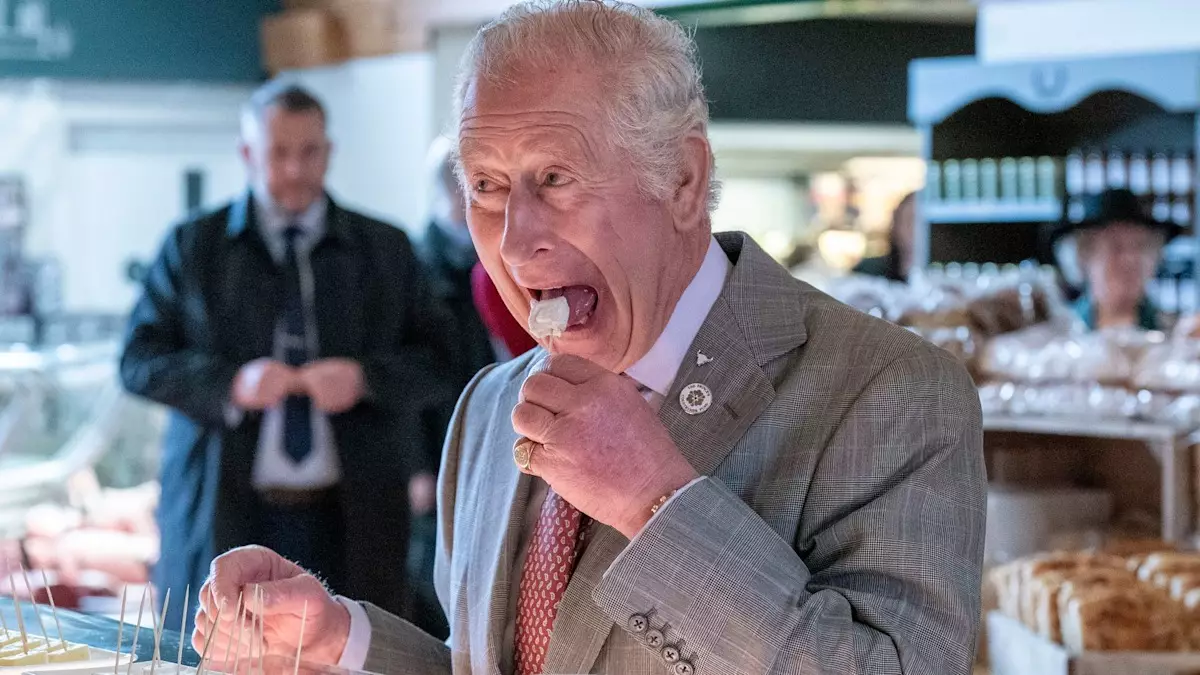Easter Sunday stands out as a cherished day in the British royal family’s calendar, steeped in history and tradition. The focus on family gatherings, shared faith, and the warmth of togetherness creates an atmosphere of joy that resonates through the generations. From the playful egg hunts organized by Queen Victoria for her children to the contemporary tradition of attending Easter services at St. George’s Chapel, the royal family’s observance of this day symbolizes a sustained connection to heritage, faith, and the unity that comes with family.
The essence of these celebrations extends beyond ceremonial responsibilities; they revolve around the simple yet profound act of dining together. The royal table transforms into a hub of familial bonds, allowing members of the royal family to come together in a private setting for a sumptuous meal. While it may seem extravagant to an outsider, the real value lies in the cherished moments shared over this meal, a notable shift for a family whose members typically adhere to strict dining customs.
The Culinary Context of Easter
One cannot discuss royal Easter traditions without delving into the feast itself. Traditionally, lamb takes center stage on the Easter Sunday menu, embodying rich symbolism connected to Christian beliefs. Revered as a “sacrificial lamb,” the lamb serves as a poignant reminder of Jesus as the “Lamb of God,” who sacrificed himself. This longstanding royal tradition not only nourishes the body but also feeds the spirit, invoking sentiments associated with resilience and hope.
The culinary insights from former royal chef Darren McGrady bring to light some delectable details about this festive spread. He has shared that roast lamb, preferred well-cooked by the late Queen Elizabeth II, accompanied by a fresh garden salad, sets the scene for the feast. The second course typically features local delights, such as Windsor cheeses and seasonal fruits including succulent white Windsor peaches. These choices not only reflect a preference for taste but also a commitment to sourcing ingredients from the royal estate, thereby connecting every bite to the land they cherish.
Beyond the Roast: Sweet Sensations and Sweet Memories
But the Easter menu isn’t just limited to the main course; it balloons into a delightful assortment of treats that can make anyone’s mouth water. McGrady noted the delightful hot cross buns that were created specifically for afternoon tea after the cheese and fruit—these quaint pastries symbolize warmth and comfort, echoing the very heart of family gatherings.
Equally delightful are the decorated chocolate eggs that tantalize the taste buds of the family members. The late Queen’s fondness for chocolate added a genuine touch to the occasion, illustrating how even royals indulge in simple pleasures. Yet, the current King Charles III diverges from this sugary path; his preferences have been noted to lean away from chocolate, favoring instead the exquisite taste of lamb, a staple that resonates with his personal palate and provides an interesting contrast to previous traditions.
The Joy of Easter Hunts: Modern Family Traditions
Celebrations, however, aren’t just about the feast; they extend to the playful side of royal life, particularly through the initiatives of Prince William and Princess Kate. In years past, the couple has taken great joy in organizing Easter egg hunts for their children, Prince George, Princess Charlotte, and Prince Louis. This fun-filled tradition injects a sense of joy and playfulness into their celebrations, reinforcing generational bonds in a very modern context.
However, the royal family’s Easter traditions faced interruptions in 2024 due to health concerns affecting Kate, yet it underscores the resilience of family traditions. While the public aspect may have seeped away momentarily, one can only anticipate their return to normalcy and celebration in subsequent years, reaffirming their commitment to continue these beloved customs and memories.
Overall, Easter Sunday encapsulates the essence of familial love and timeless traditions that resonate not just within the walls of royal palaces but also within the hearts of those who cherish shared memories and the warmth of a familial feast. Through the richness of tradition and the magic of food, the royals create a tapestry of meaningful connections that harmonize the past with the present.

